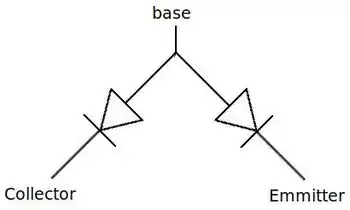Typically we want to have a transistor to operate in what is called active mode. Active mode is when the Base-Emitter junction is forward biased and the Base-Collector Junction is Reverse biased. For the npn this means that the Base has a higher potential than the Emitter and a lower potential than the collector. Now, confusion happens because even though this seems like a simple rule Ve < Vb < Vc there are two ways of looking at it. One way states that only that equation must be obeyed in order to get forward-mode the other way throws a new condition on it. The new condition states that: Not only does Vb have to be higher then Ve it must be higher by a certain amount, the same holds true for Vc. Vc must be higher then Vb by a certain amount. This amount is Vbe(on) and Vce)on) respectively.
Way 1
If Ve < Vb < Vc holds true then the npn transistor is in active mode
Way 2
If Ve + Vbe(on) < Vb and Vb + Vce (on) < Vc the transistor is in active mode
discussion
This comes from the fact that a diode doesn't function correctly below about .7 volts. Typical values for Vbe(on) and Vce (on) are around .4 - .5 volts. You have to decide when to use which model. Typically you use way 2 when there is no feedback present.
Model Discussion

This model illustrates Way 2. It is a very very simple way to model the transistor but is useful for determining modes. What you will find in this course is a hierarchy of transistor models. With simple models only good for certain applications. In this case This model will allow you to determine what mode the npn transistor is in.